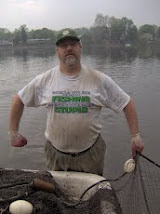On our first day in
Seville, we went on a tour of the two major attractions of the city, the
Cathedral where we saw Christopher Columbus’ tomb and climbed the Giralda
belltower, and the Alcazar Palace, where we cowered appropriately in the Hall
of the Ambassadors, whose grandeur was meant to inspire angst in anyone
visiting the royalty of Spain. The next day we went on a tapas bar tour where
we learned not only what was on the menu, but what to drink. An aged sherry
called Oloroso became our favored drink. Then later that evening we went to a
Flamenco show, one of many such “tablaos” in the city.
We had experienced
already quite a bit in Seville in these two days, and we had nearly three full
days left to explore this Andalusian city. Yet, by the end of our time here, we
wished we had more time!
Sadly we discovered Triana, a section of Seville too late. Here’s a quick recap of
our time there.
TRIANA
From Auto-da-fés to
Espinacas Con Garbanzos
Triana is across the Guadalquivir River and is less touristed
than the rest of Seville. More residential than Santa Cruz, the tourist-central barrio where our apartment was located. Nevertheless Triana has a history that is compelling and worth a visit.
Sadly, we didn’t trek
over the river until our Saturday cooking class with the Taller Andaluz de
Cocina cooking school located in the Mercado de Triana just over Puente de
Isabel II.
Part of the “class” was a tour of the market and her myriad of food
stalls. We learned about the ingredients of the meals we were going to prepare
in our class, as well as olives and Jamon and cheeses and vegetables and
fruits. We also learned that
the market was once the site of the notorious Castle of San Jorge, where the
Spanish Inquisition was headquartered and had its prison.
Auto-da-fés means “act of faith” a requirement
of public penance meant to test the piety of heretics and apostates. These
“acts of faith” didn’t usually end well for the accused, but we were able to
walk away unscathed down the ominously named Callejon de la Inquisicion, an alley
that led the poor souls from the river to their accusers.
It is possible to view
the ruins of the Inquisitor castle at one end of the market.
COOKING CLASS w/ TALLER
ANDALUZ de CONCINA
 |
| Cooking class |
The cooking school offers several options to learn Spanish cuisine and it is a fun activity. There were 12 of us in their kitchen located a short walk down the paseo along the river.
We made Gazpacho, a
spinach and chickpeas tapas (Espinacas con Garbanzos), Paella Valenciana and
for dessert a lemon sorbet with cava (Spanish version of champagne). We were
given a choice of beer, soft drinks or freshly made sangria.
HIDDEN GEM at THE MERCARDO de TRIANA
It is possible to have
a meal or drinks at several stalls in the Mercado de Triana, and after our
class we purchased some olives and saffron to take home.
Flamenco is an artform that is closely associated with the Romani people and Triana has a large population of Romani. There are several Flamenco bars in this section of town. Here's a list: FLAMENCO BARS
In the Mercardo there
is a small theater with seating available for less than 30 patrons, which holds
Flamenco shows. At the Casa Le Teatro, located at stalls 11 and 12, they hold
“Intima Triana” Flamenco shows roughly twice a week. For a chance to experience
Flamenco up close and personal go here for tickets: INTIMA TRIANA FLAMENCO
AZULEJO, TAPAS AND
MATADORS…and BOATS
Tapas
Our Tapas tour guide,
Shawn, recommended several places in Triana, and we returned the next day on
Sunday to have drinks and we ordered every tapa she suggested at Antiqua Casa Diego, although Janet only ate the Ensaladilla de Pulpo (Octopus).
Here is Shawn's review of Antiqua Casa Diego: ANTIGUA CASA DIEGO
Located on Alfareria 5
just off the main street of Triana that was closed to traffic and families
strolled in the afternoon sun. There were several merchants displaying their
wares on blankets.
 |
| BELMONTE |
Matador
Juan Belmonte is
considered by many as the greatest matador. He revolutionized bullfighting by
not jumping out of the way of a bull when it charged but would stand motionless
and “guide” the bull around him, dangerously close to the horns. He was gored
several times, but he did fight 109 bulls in 1919, a record at the time.
He is from Triana and
was a friend of Ernest Hemingway, who wrote about him in two novels: Death
in the Afternoon and The Sun Also Rises.
Just as you come into
Triana just over the Puente Isabel II there is a statue of Belmonte in the
Plaza del Altozano, just across the street from the market.
Azulejo
Tin-glazed ceramic
tiles are popular in Spain and Portugal and decorate everything from exteriors
of homes to churches and restaurants. Triana became the center of this
ornamental tiling in the 13th Century and today you can visit a
museum of Azulejo tiling in Triana.
There are wonderful
Azulejo tiling all throughout the Plaza de Espana. The plaza was built for the
Ibero-American Exhibition of 1929 and features 52 azulejo decorated benches
representing each of the provinces of Spain. Located in Maria-Luisa Park it is
possible to rent a boat to sail on the canal or hire a horse drawn carriage for
a ride around the park, although it is free to stroll the grounds of both the park and the plaza.
Cruise the Guadalquivir
There are tour boats
along the river that separates Triana from Seville. This one-hour leisurely
diversion leaves from the Golden Tower, a defensive edifice erected by the
Muslims which is not far from the Alcazar Palace and returns there. There is
audio commentary on board and you get to see Triana from the river. The trip
costs about $22.00.
 |
| PLAZA de ESPANA TILING |
So, it is easy to limit your destinations in Seville to the main areas, but if you have the time, explore Triana.
Thanks for reading.
Love Janet and greg
© 2023 by Gregory
Dunaj



































No comments:
Post a Comment